From the capital's central streets to the smallest village in the east of the country, Serbia can boast a rich and diverse catalog of sights dating back to Neolithic times. Have you ever wondered does Serbia have pyramids or what makes Zasavica so special? We will answer those and many other questions. Be ready to extend your bucket list! Just some of the landmarks in Serbia we'll virtually visit together are:
- Zasavica - Home of the most expensive cheese in the world
- Rtanj - Mystical pyramid or just a mountain?
- Tumane Monastery - Miraculous landmark of Eastern Serbia
- Krupajsko vrelo - Fairytale spring
Devil's town - Nature or divine intervention?
Kuršumlija is rich in this almost new world wonder, which scientists and legends have tried to explain. Devils Town or Đavolja varoš is a specific geomorphological gallery and one of the most visited attractions in Serbia. On the slopes of Mount Radan, over 200 stone figures were formed and distributed in two ravines with specific names, Paklena and Đavolja (Hell-like and Devil’s). This happened through a combination of natural and human actions, as the destruction of forests opened the way for the erosive powers of water. Or, if you prefer, divine intervention prevented a brother and sister from getting married and petrified the wedding party to save them from sin. The natural attraction has been under state protection since 1995 when it was declared a natural asset of exceptional importance. On the way to the gallery, there are two sources of acid water, the cold and highly acidic Đavolja Voda and the slightly milder Crveno vrelo. The best view of the rock formations is from the viewpoints placed in 3 locations for the most comprehensive experience. Learn more about this unique landmark in Serbia on our page - Devil's Town Serbia .

Resava cave
With its length of 4.5 km, more than 2830m of explored space, and an entrance at 485m above sea level, it is one of the largest caves in Serbia. The Resava cave, which we wrote about in more detail, covers the area in the eastern part of the country, as it is located only about 20 kilometers from the town of Despotovac. Just so you know - warm clothes will be your best friend while exploring this cave. The temperature in the cave does not exceed 7 degrees all year round. As you walk through its corridors, remember that it is as old as 80 million years, which fully justifies its status as a protected monument of nature. The Resava cave is known for its red breccia tunnel, which connects two corridors, and remains almost completely dry and does not contain any jewelry. As much as 800 landscaped meters will be available for you to explore, and red, yellow and white jewelry will accompany you almost the entire way.

Krupajsko vrelo - Fairytale spring
Trips to Krupajsko vrelo are becoming more and more popular with weekend tourists in Serbia, and we couldn't be happier about that. This spring of karst origin attracts attention with its magical blue-green color and cascading waterfalls, which maintain a temperature between 9 and 11 degrees throughout the year and flow from a naturally formed amphitheater. The lush vegetation that surrounds it also adds to the fairytale nature of this location, so be prepared to wait patiently for your turn to take photos. It is located on the western side of the Beljanica mountain and represents the source of the Krupajska river, the future tributary of the Mlava. This spring hides some secrets below the surface, as it is 123 meters deep and contains a series of underwater labyrinths that await further exploration. To learn how to get to the spring and what awaits you in the area, pay a visit to our Krupajsko vrelo page.

Zasavica - Home of the most expensive cheese in the world
If you are a nature lover, this will be one of your favorite landmarks in Serbia. The municipalities of Sremska Mitrovica and Bogatić share a special nature reserve, which flourished when it was handed to the Pokret gorana non-profit from Sremska Mitrovica. If Celtic maps are to be believed, Zasavica is one of seven territories in the Balkans where dragons lived. This wetland area is dominated by the river, after which the reserve takes its name, so the best way to visit most of it is by boat. The visitor center, a tall wooden observation tower where you can also spend the night, is an excellent starting point for you to go exploring more than 600 plant species and numerous mammals. Zasavica drew particular attention to itself when it was selected as a place in Serbia for the reintroduction of beavers in 2004. It was put on the world map by the production of donkey milk cheese, the most expensive cheese in the world. It's called pule, and you need to pay over $1,100 for a kilo of this delicacy. Would you try it?
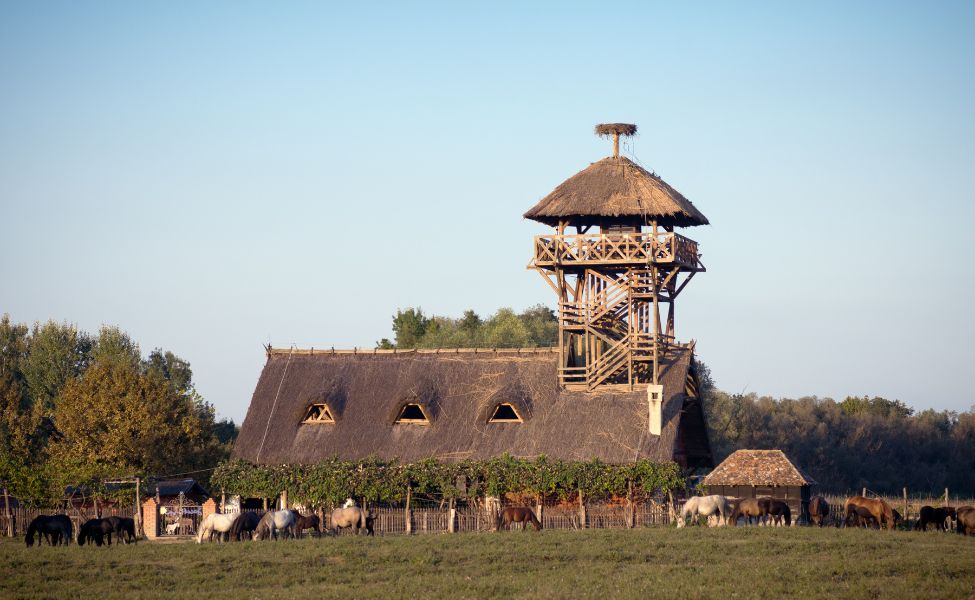
Taorska vrela - Graveyard of Watermills
Magical springs and numerous waterfalls are hidden on the slopes of the highest mountain in Valjevo. Taorska vrela springs in the Donji Taor village, where a cave that once was a rich water source is closed to the public. This is also the location with the largest accumulation of tufa in the whole of Serbia. Vrelo hasn't been at its full strength ever since its power was diverted for the needs of the water supply. Before that, the abundant water from the spring passed through more than 12 mills, of which only stories and some ruins remained. Today there are two mills on it, the larger of which called Pepića mill has been transformed into an ethno-house and an exceptional restaurant. Your break from walking all day through narrow streets will be blessed with traditional Serbian gourmet food and homemade rakija.
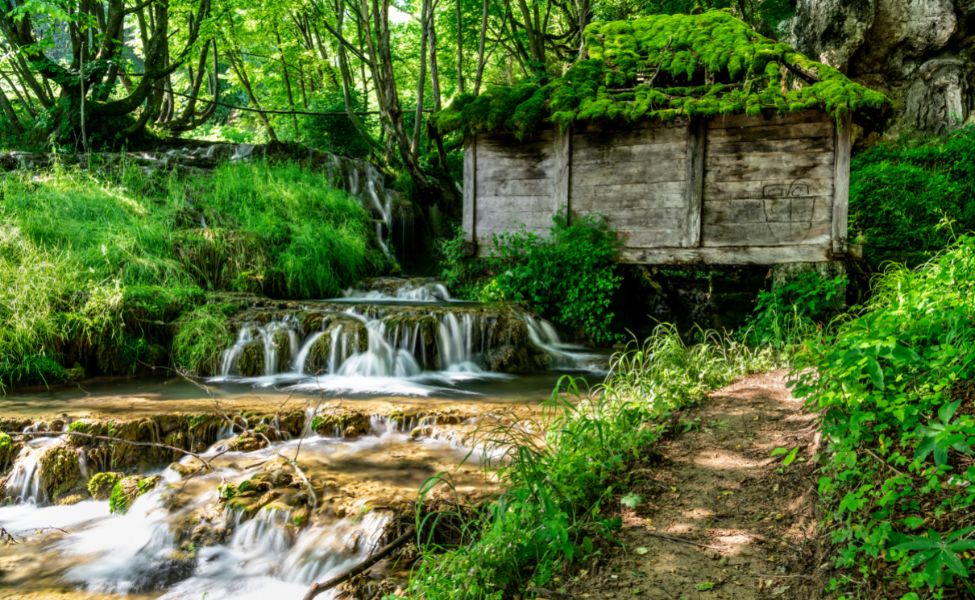
Lisine waterfall - 11th highest waterfall in Serbia
A list of unique landmarks in Serbia couldn't be complete without a quick stop at a waterfall. A dense forest near the confluence of the Vrelo and Resava rivers, at an altitude of 380 meters, hides a waterfall that was once thought to be the largest in Serbia. Although waterfalls on Stara Planina took that title away, the Lisine waterfall, popularly known as Veliki Buk, is undoubtedly one of Serbia's most impressive natural attractions. The accumulation of tufa in the Vrelo river area led to a creation of a small lake at its foot. The cascades of the Lisine waterfall reach a height of 25 meters. The waterfall itself and its immediate surroundings have been declared a natural monument, so be prepared to pay up to 350 dinars for a visit to this site and neighboring attractions.
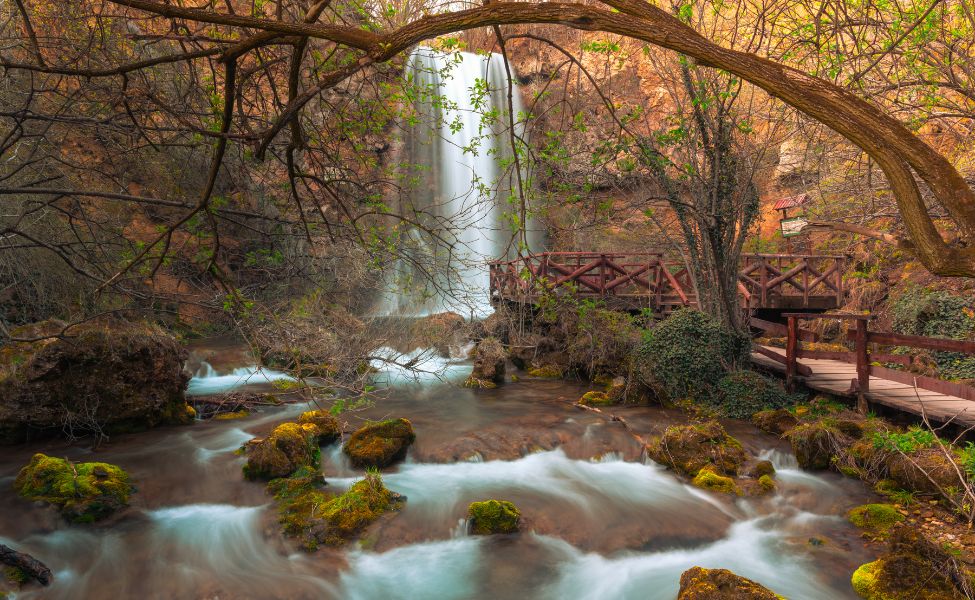
Rtanj - Mystical pyramid or just a mountain?
If you consider yourself an experienced European mountaineer, you have probably already conquered Šiljak at its 1,565 meters of height. Although the trails of Rtnja are favorable for long hiking tours and cycling, and the surroundings are popular among hunters, this location's mystique makes it exciting. Whether Rtanj is a mountain or a pyramid is a question that has fascinated locals and foreign tourists, and the ever-active conspiracy theorists for decades. Although the specific appearance of the three-sided pyramid can be explained by the fact that it is of karst origin and belongs to the Carpathians, this did not prevent the creation of legends. Rtanj contains numerous springs, pits, and caves, which did not help either. We will never know whether it is hollow and welcoming visitors from other planets or whether it is guarding a long-forgotten and melted treasure.
Find even more exciting Serbian mountains in our blog - Most famous mountains in Serbia.
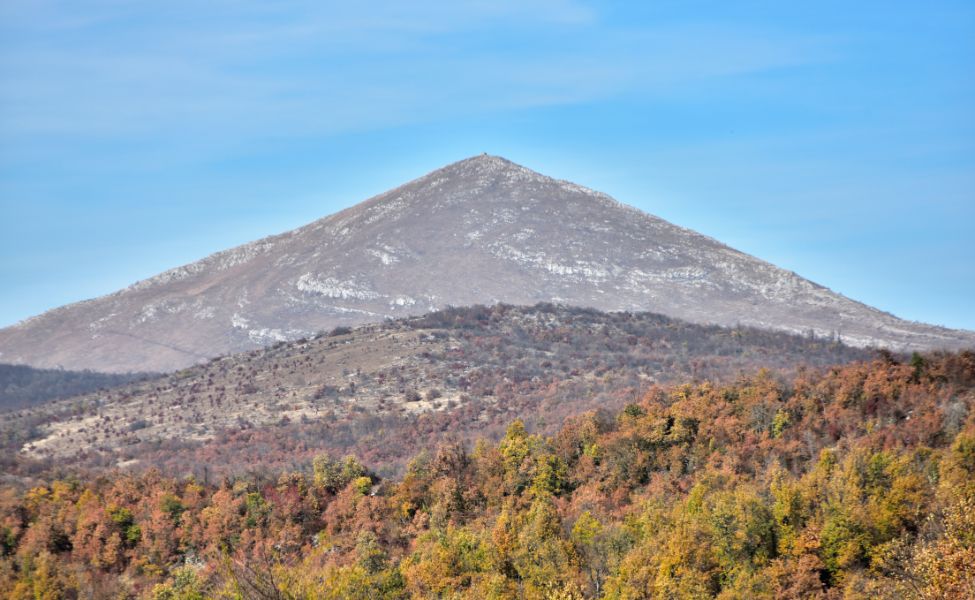
Skull Tower - Serbia's infamous Ćele kula
The Battle of Čegar left many dead, whose heads were used to build this grotesque tower. Although in other parts of the world the custom dictated that buildings be erected in memory of the fallen, for the Turks the Ćele Tower glorified their victory over the Serbian people. Before the skulls ended up in the tower's construction, as many as 952, the skin was stuffed with cotton and sent to the sultan in Constantinople with great pride. Despite everything, the tower did not strike enough fear into the insurgents' ranks to make them give up the idea of liberation. Knowing Serbian stubbornness, it probably inspired them even more. The number of skulls on the tower was mainly decreasing due to locals removing them at night to organize a proper funeral and accompanying customs. After the liberation of these regions, the tower and the area around it were decorated and made into one of the most unique landmarks in Serbia. Read more about ticket prices, opening hours, and more detailed history on our Cele kula page.

Skadarlija - Bohemian quarter of Belgrade
This vibrant heart of Belgrade is beautifully contained in the words of the writer Kosta Dimitrijević:
If Paris is the capital of the world, Montmartre is the capital of Paris;
if Belgrade is the world's crossroads, Skadarlija is its soul
At first, an unsightly, cobbled street called Ciganska mala, through which local kids run playing built its iconic status as a hotspot for artists and bohemians. Before the 14 taverns came the inns and houses with courtyards constructed in this part of the city, which suffered significantly when modernization came. Skadarska Street has stubbornly resisted urbanization to this day, preserving the Three Hats and Two Deer taverns in their almost original condition. Take a walk along the street where Branislav Nušić, Đura Jakšić, Momo Kapor regularly walked, and Toma Zdravković sang. Skadarlija is the place to go if you want to eat the best meal of your life, have fun with beautiful people and listen to local music. We wrote about the history and how to get to Skadarlija, it's up to you to read.
Read our guide for sightseeing Belgrade to find even more spots to visit after a wild night in Skadarlija.

Lepenski vir
Did you know that Lepenski Vir is the oldest settlement in Europe? Precisely in this area, on the right bank of the Danube, in the 60s, the remains of a fishing and hunting settlement were found, and extensive research was then initiated. This research revealed as many as seven successive settlements of the Neolithic and Mesolithic periods and more than 130 objects created in the period from 9,500 to 5,500 BC. Today, the Lepenski vir site covers an area of 55 hectares, protected by a mesh structure, and available to visitors to admire. Authentic architecture has been preserved within the site and visitor center, including stone hearths, tents, and shrines, most of which are made of red limestone. During your visit, you will be able to see how the dead were buried and honored and also see for yourself the beauty of the famous sculpture of the Progenitor.
Exploring this archaeological site is a must while traveling to Serbia, which you can read about in our blog.
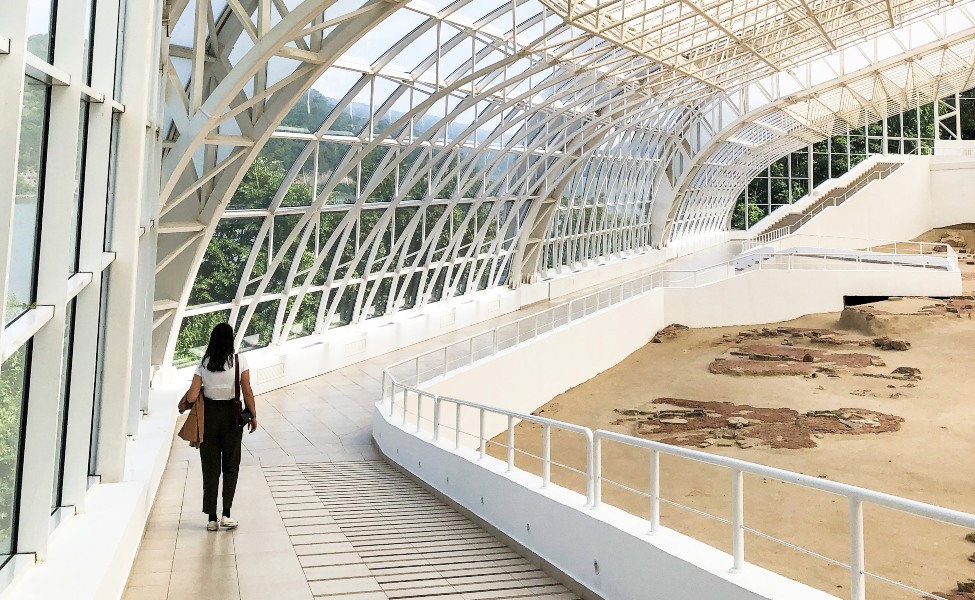
Tumane Monastery - Miraculous landmark of Eastern Serbia
If folk traditions are to be believed, the Tumane monastery was built by the greatest of all Serbian heroes, Miloš Obilić. In the place where he killed the ascetic Sinait with an arrow, he built a monastery and laid his relics in the name of redemption. Tumane Monastery now counts almost a million visits yearly, as believers and intrigued tourists follow the stories of miraculous healings to it. The monastery keeps the icon of the Mother of God under the name Kurskaya, which arrived here after surviving the burning of the monastery in the vicinity of Kursk. It is customary to take the clothing of an ill individual with you when visiting the monastery for blessings and return it to the person after it has been consecrated. Whether you are skeptical or want to give these customs a chance, going to Tumane Monastery is a unique experience. In the monastery, you can buy herbal creams and tinctures, teas, icons and books, holy water, and towels.
Continue your adventure through churches and monasteries in Serbia with the help of our blog - Most famous Serbian monasteries.

Sirogojno - Ethnic open-air museum
Are you ready to travel through time? This is precisely what awaits you when you step into the log cabins of the village of Sirogojno, which have preserved their original form and purpose.Only a 30-minute drive from Zlatibor stands a unique village and open-air museum, the only one of its kind in Serbia. To this day, Sirogojno has preserved several houses typical of the Zlatibor region in the 19th and 20th centuries, some of them in their original place and some transferred to form a specific collection. You will find sculptors, barns, bakeries, dairies, farms for raising animals and typical workshops for making brandy. What makes Sirogojno particularly enchanting is the Museum of Knitters. Woolen works from this museum were featured in Pierre Cardin's collections and are considered one of Serbia's most famous brands. The museum exhibits unique items of clothing, materials, and tools and proudly presents photos of famous people who had the opportunity to visit Sirogojno, as well as numerous awards.

Do you feel ready to travel to this gorgeous country in the Balkans? These 12 attractions in Serbia are just the tip of the iceberg - many interesting lakes, museums, and castles await you. Be sure to check out our blog, which tells you all you need to know about Serbia before visiting and prepare yourself for the trip of a lifetime. Which of these landmarks in Serbia are you most excited about?



